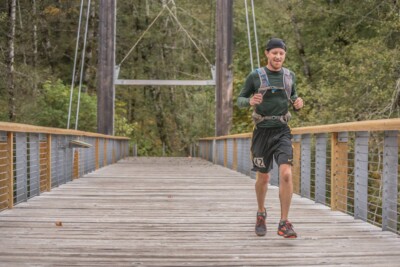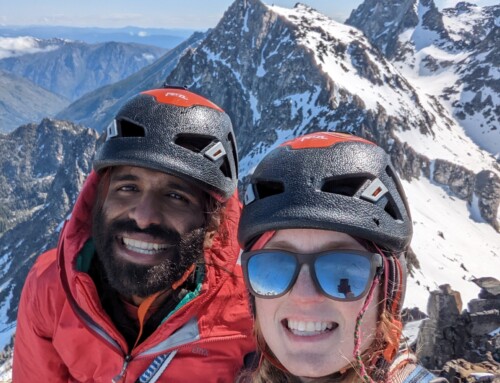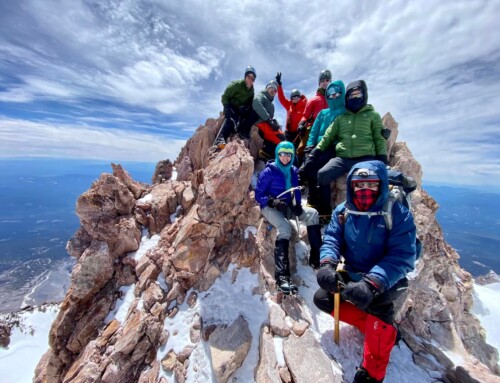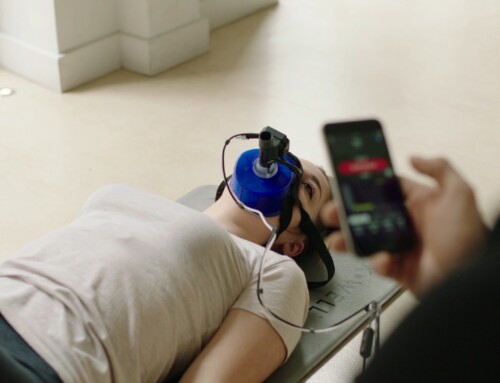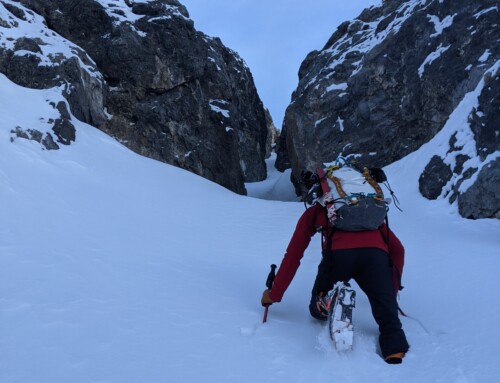I’m 44 years old, and I’ve been ultra running for about 10 years now. In the lifespan of an ultra runner that’s both an eternity and a flash in the pan. And one thing for sure is that every runner has a different experience and different relationship to their body and the impact training and competing has on it. For me, especially as I’ve grown long in the tooth, combining Chiropractic care with a steady routine of strength training has been invaluable in keeping me moving towards my goals. At Evolution there is the added perk of Altitude Training that really helps my training and performance.
I started running after visiting a Team in Training booth at a beer festival in California where I signed up for and then completed the Honolulu Marathon in 2006. The marathon was my first race, I didn’t run a single shorter distance race prior to that. While Team in Training did a great job programming the training to try and avoid injuries, I soon discovered that injuries were par for the course when it came to my relationship with running.
I was hooked on running and after moving to Portland in 2008 I continued to fall down the rabbit hole and also decided that I’d better become a triathlete. At some point while training for IronMan Canada, I was introduced to Dr. Brad Farra who gave a talk to the Portland Triathlon Club. He was there to give a talk on preventing injury. Well, I was impressed by Dr. Farra’s extensive knowledge of the human body and how to fit all the puzzle pieces together to train, recover, and perform at my best. He was not just a Chiropractor but a Certified Chiropractic Sports Physician & Certified Strength and Conditioning Specialist. This was important to me because it meant he knew how to work not just with ordinary folks who happened to get into a car accident but also how to specifically work with athletes. In addition, he was an IronMan and a multi-sport mountain athlete himself which was important to me.
Patellofemoral pain syndrome, commonly known as Runner’s Knee, was a frequent part of my early years of running. It was fairly common and there were some readily available “solutions” to the problem. For years I dealt with the pain by using a patellar strap. I didn’t yet understand the concept of putting a band-aid on a problem and actually solving the problem. Eventually, I scheduled an appointment to see Dr. Farra about this issue, as it was interfering with my training load and enjoyment of the sport. My first appointment with Dr. Farra was an hour long and he needed every minute to meticulously examine my biomechanics, checking for tightness and imbalances in muscles and joints nowhere near my knee, but related to the function of my knee. It makes sense thinking back on it, as it’s all connected.
Towards the end of the appointment, he seemed to have a good idea of what my knee pain was being caused by. He told me my vastus medialis obliquus (VMO) wasn’t firing properly and was the weak link in my quadriceps muscle group. The VMO is the smallest of the quads, the teardrop shaped muscle on the inside of the knee. It attaches directly to the patella. Doc gave me some exercises to do at home and also while training at the gym that would help perfect my squat form and ensure the VMO was being used effectively. It didn’t take long and my pain was gone and my patellar straps were in the garbage. I was totally sold on the expertise of Dr. Brad Farra, becoming a regular patient for a variety of injuries.
I’d seen several Chiropractors (mind you not Sports Chiropractors) in the past and I never had a very positive experience. Nobody had really understood my mentality, that running wasn’t just something I did as a hobby but something I really needed in my life for both physical and mental fitness. Taking a couple weeks off or running less was what other doctors had advised, and that just didn’t work for me. I’ve now seen Dr. Farra for many acute (sprains, strains, torn rotator cuff) and chronic (stress fractures, torn hip labrum) overuse injuries. While there have been times where time off was required, he never recommended that unless he felt it was absolutely necessary. I never received the classic advice that annoys all runners when the doc finds out you only have pain while running, which of course is to stop running.
Appointments with Brad are typically uncomfortable. He’s got pointy elbows and other implements with which he does not hesitate to dig into tight muscles and break up scar tissue and to get the nervous system to appropriately respond to treatment and rehab. And you’re virtually guaranteed to leave his office with exercises that you need to do at home or in the gym. And he will know if you are compliant or not because your body will tell him without you having to say a word. His understanding of biomechanics and anatomy is unparalleled. And he’s a big fan of mastering the basics. For me, an ultra runner, he wants me focused on squats, deadlifts, core and lots of single leg exercises that will help prepare my muscles to absorb the impacts of running mile after mile, day after day. I train hard for this sport, and being under the care of a sports Chiropractor has undoubtedly helped me thrive.
Speaking of exercises, it is convenient that the Evolution Healthcare and Fitness gym is connected to the clinic. In the off season I try to strength train 3-4 times per week. During peak running season, it usually goes down to 1-2 times per week. The intensity of my workouts changes too, I lift with more intensity in the off season as I focus on building strength. During peak season I’m just looking to maintain strength without compromising my ability to run long on the weekends and recover properly. It’s rare that I don’t mix in a routine of exercises that have been prescribed to me by Dr. Farra, usually as a warm up prior to digging into my heavier loads. I’m not doing any fancy Instagram routines either. I’m sticking to the basics, the fundamentals which I’ve learned keep me strong and healthy. I know my body pretty well at this point, if I stop strength training I inevitably end up injured.
Finally I’ve got to mention the Altitude Training Room. I’ve used this room specifically to prepare for high altitude ultra marathons and I’ve used it to boost my performance right here in Portland. A company called Hypoxico engineered a system that filters the oxygen out of the room. It is stocked with a ton of equipment, enough to perform pretty much whatever workout I desire. My typical approach is to go in and utilize one of the four treadmills that can reach an incline of thirty percent. I throw some weight in a pack, set the incline to fifteen percent or so, and I power hike like mad. I find it really useful to practice with extra weight because I know that I’ll be doing a lot of power hiking in my runs and races and I’d like that to feel as easy as possible. There is a ton of science behind this room. Training for three hours a week for a month is enough to measurably improve the physiology of oxygen absorption, delivery, and usage. The proven changes that happen with altitude training improve performance and even recovery.
I’ve used several other services at Evolution too, but Chiropractic care has been my go to. The massage services are excellent. Acupuncture is great and works really well for me with seasonal allergies. Usually two visits to the acupuncturist is all I need each spring to dramatically reduce my seasonal allergies. It’s an amazing facility and I feel like my ultra running performance is really improved by training here. I managed the gym for four years too, so this is really a special place to me. Covid has been hard on the gym. So if you’re ready to go back in and support a locally owned and operated business there is no better time. Call to have your insurance benefits checked too, you pay a lot for them and you may as well take advantage!

